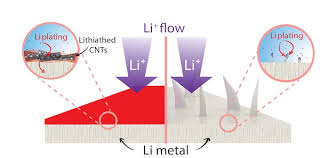
Breaking News
 Withdrawing the United States from International Organizations, Conventions, and Treaties...
Withdrawing the United States from International Organizations, Conventions, and Treaties...
 The Food Math Nobody Does (But Should)
The Food Math Nobody Does (But Should)
 Versatile Liquid Metal Composite Inks for Printable, Durable, and Ultra-Stretchable Electronics
Versatile Liquid Metal Composite Inks for Printable, Durable, and Ultra-Stretchable Electronics
 There is no need for me to write a post around the below illustrative video...
There is no need for me to write a post around the below illustrative video...
Top Tech News
 Kawasaki's four-legged robot-horse vehicle is going into production
Kawasaki's four-legged robot-horse vehicle is going into production
 The First Production All-Solid-State Battery Is Here, And It Promises 5-Minute Charging
The First Production All-Solid-State Battery Is Here, And It Promises 5-Minute Charging
 See inside the tech-topia cities billionaires are betting big on developing...
See inside the tech-topia cities billionaires are betting big on developing...
 Storage doesn't get much cheaper than this
Storage doesn't get much cheaper than this
 Laser weapons go mobile on US Army small vehicles
Laser weapons go mobile on US Army small vehicles
 EngineAI T800: Born to Disrupt! #EngineAI #robotics #newtechnology #newproduct
EngineAI T800: Born to Disrupt! #EngineAI #robotics #newtechnology #newproduct
 This Silicon Anode Breakthrough Could Mark A Turning Point For EV Batteries [Update]
This Silicon Anode Breakthrough Could Mark A Turning Point For EV Batteries [Update]
 Travel gadget promises to dry and iron your clothes – totally hands-free
Travel gadget promises to dry and iron your clothes – totally hands-free
 Perfect Aircrete, Kitchen Ingredients.
Perfect Aircrete, Kitchen Ingredients.
 Futuristic pixel-raising display lets you feel what's onscreen
Futuristic pixel-raising display lets you feel what's onscreen
Nanotube film enabling ten times higher energy lithium metal batteries

Over time, these tentacle-like dendrites can pierce the battery's electrolyte core and reach the cathode, causing the battery to fail. That problem has mostly stopped the use of lithium metal in commercial applications.
Lithium metal charges much faster and holds about 10 times more energy by volume than the lithium-ion electrodes commonly used today.
The tangled-nanotube film effectively quenched dendrites over 580 charge/discharge cycles of a test battery with a sulfurized-carbon cathode the lab developed in previous experiments. The researchers reported the full lithium metal cells retained 99.8 percent of their coulombic efficiency, the measure of how well electrons move within an electrochemical system.



